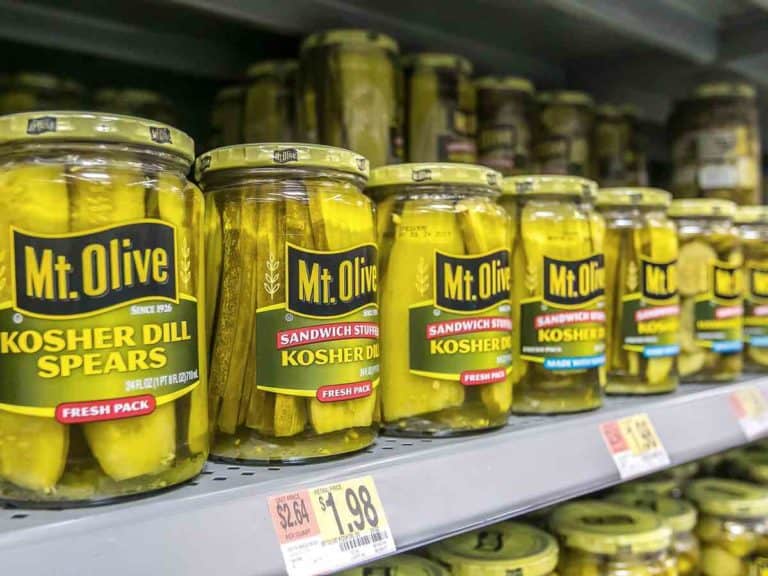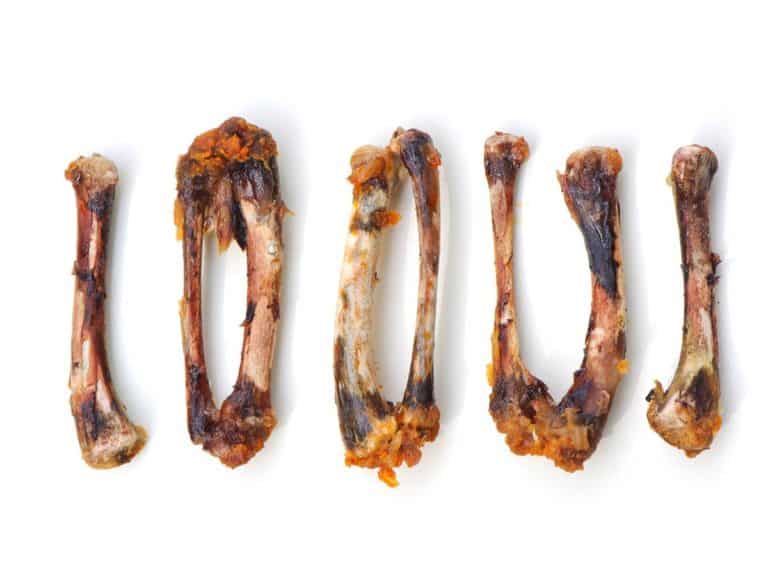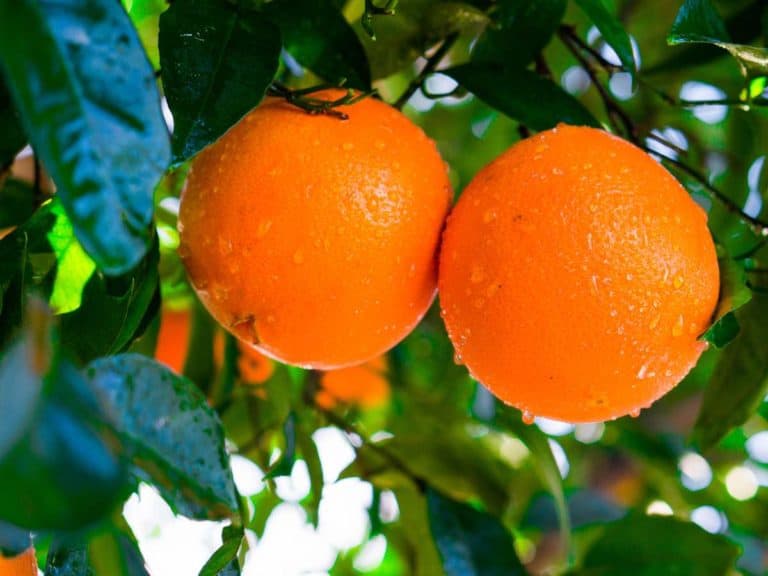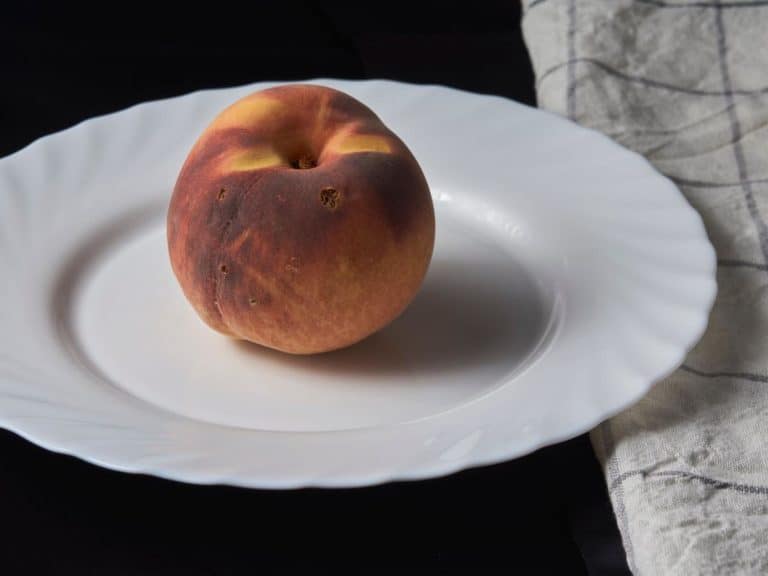Like Kimchi? Here Are 6 Things To Know
Kimchi is a staple traditional dish in Korean cuisine. It’s sour, spicy, and savory. Depending on how much sugar and salt is added, the sweetness and saltiness can vary. Kimchi is mostly vegetables.
I like kimchi a lot, but is it wise to eat almost every day?
In general, it is alright to eat kimchi every day. Because kimchi is mostly vegetables, it’s packed with fiber and plant nutrients. And since kimchi is fermented, it’s also packed with probiotics. According to the cultural heritage administration in Seoul, about 95% of Koreans eat kimchi more than once a day.
The number of Koreans eating kimchi every day has declined. The reason is the rising popularity of Western food. As a response, there are efforts to renew interest in kimchi. Some of those efforts are to let people know the reasons they can eat kimchi every day. You can read those reasons below.
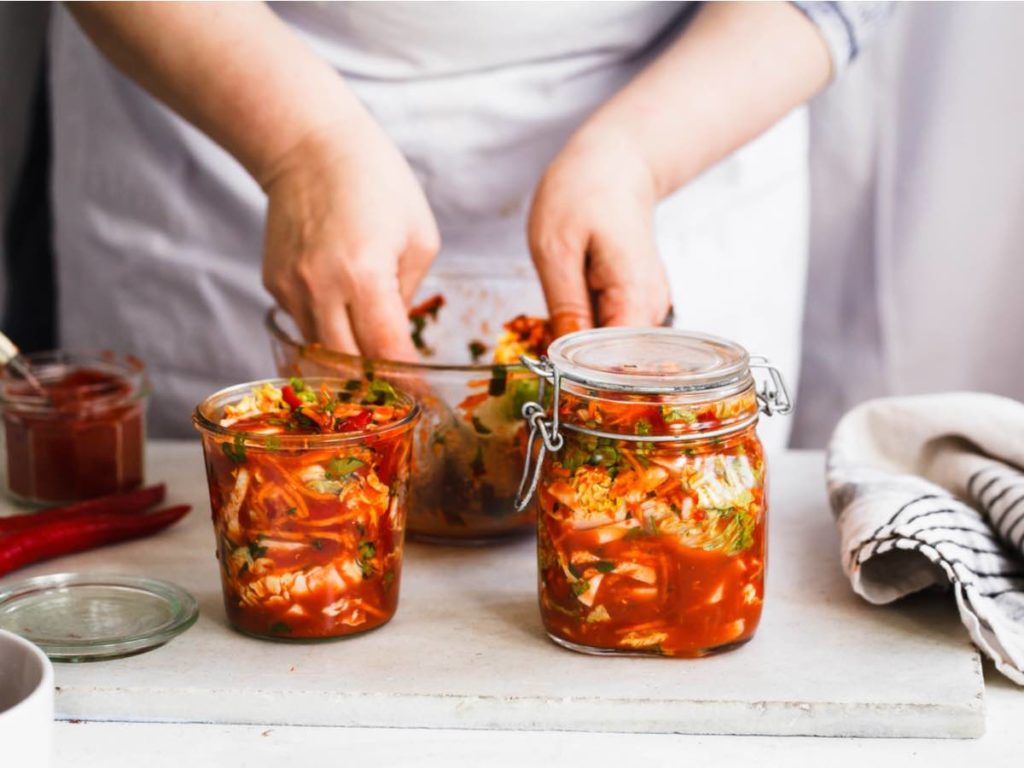
How Kimchi Is Made
Kimchi is a bunch of fermented vegetables. The main ingredients are napa cabbage and Korean radish. Other vegetables that can be found are celery, eggplant, garlic, tomatoes, bamboo shoots, and many more.
There can be slight or major differences between how Koreans make kimchi. All those vegetables are chopped up and placed in a container. Everything is then submerged in water.
Sugar is added for fermentation. Salt is added to keep unwanted microorganisms away. The container is sealed and placed in a cool dark place to ferment for some days.
Fermentation is a way of amping up the health benefits of food. The bacteria that ferment kimchi are called lactic acid bacteria or LAB. The LAB are bacteria that are naturally found on the surfaces of the vegetables used.
You may be thinking, “Isn’t fermentation used to make beer and wine?”
Yes, but that is called alcohol fermentation. The kind of fermentation used in kimchi is lactic acid fermentation or lacto-fermentation. The end-product is lactic acid, which gives kimchi its sour flavor.
The LAB are also good bacteria known as probiotics. In our gut lives millions of microorganisms that help maintain our health. This population of microorganisms is called the gut microbiome. They work with the cells of our own body to keep us healthy. If we’re healthy, then the gut microbiome is also healthy.
But before we learned fermentation makes food healthier, it was used to preserve food. One of the main culprits of food spoilage is microorganisms eating the food. In a way, fermentation controls spoilage.
It doesn’t remove all the microorganisms, but it removes the bad ones and keeps the good ones. It just so happens that the good ones are also good for our gut.
That is why, in the olden days, kimchi was made in large batches. It was fermented in large containers during the winter when there would be no crops. That way, the people had food during the winter.
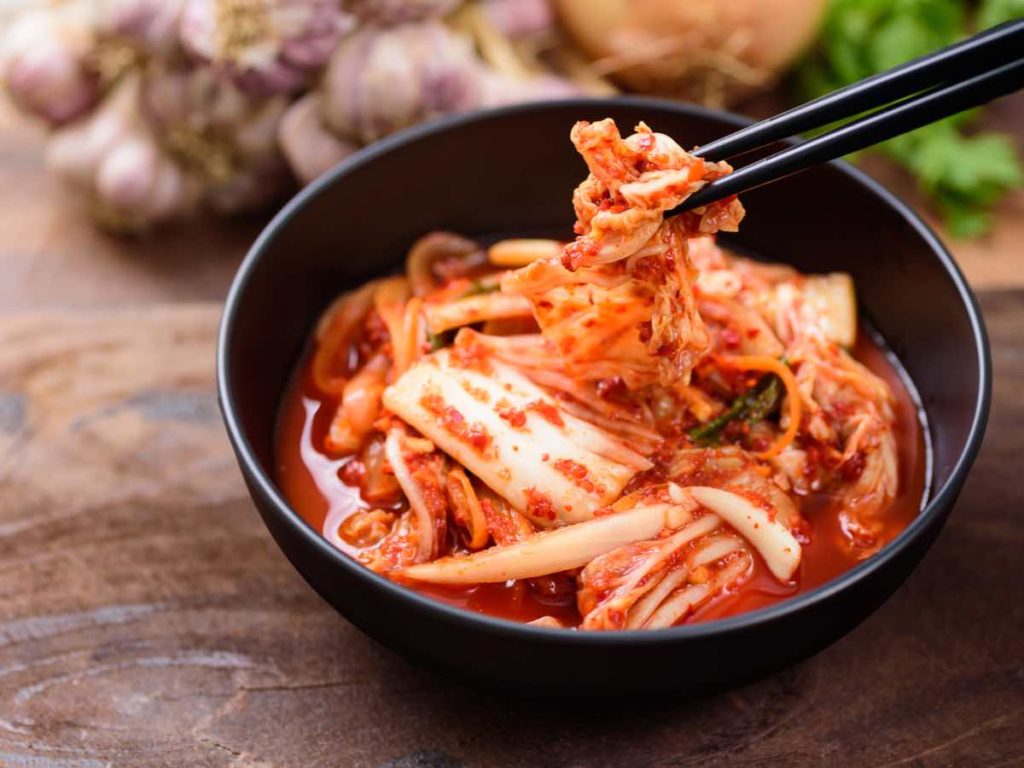
Benefits of Kimchi
Since kimchi is made of vegetables, you get all the benefits of eating vegetables. And since kimchi is fermented, you get the added benefits of probiotics.
Macronutrients
You can generally expect the following macronutrients from a cup of typical kimchi.
- Calories: 23
- Protein: 1 gram
- Fat: Less than 1 gram
- Carbohydrates: 4 grams
- Fiber: 2 grams
- Sugar: 2 grams
As you can see, kimchi isn’t s significant source of energy, which isn’t surprising. After all, it’s mostly vegetables. For many people, that is a good thing. You can eat a lot of kimchi and not exceed your caloric needs. So you can feel full without feeling guilty.
Micronutrients
What kimchi lacks in macronutrients, it can make up for in micronutrients. What kinds and how many micronutrients are present in kimchi will depend on what vegetables are used. But below are the micronutrients you can expect to find in typical kimchi.
- Probiotics
- Vitamin A
- Vitamin C
- Vitamin K
- Folate
- Beta-carotene
- Choline
- Potassium
- Calcium
Take note that probiotics and vitamins are present in raw kimchi. High-temperature processing like pasteurization can kill the probiotics and destroy the vitamins. Cooking kimchi can have the same effects.
Probiotics
As mentioned earlier, the probiotics in kimchi are lactic acid bacteria or LAB. LAB are known to have benefits for our gut and overall health. They are the same bacteria used to make other fermented foods like yogurt, kefir, and kombucha.
Below are some of the known benefits of LAB.
- Controlling intestinal infections
- Better digestion of lactose, which is great if your gut doesn’t agree well with dair
- Controlling some types of cancer
- Controlling cholesterol levels

How Much Kimchi To Eat Per Day
The World Health Organization recommends that people eat at least 400 g of vegetables and fruits. Kimchi is usually eaten as a side dish. And as a side dish, you can easily eat 100 g of kimchi. That’s already 1/4 of your vegetables and fruits for the day.
Salt Content
If you have a condition like hypertension or are at risk for it, then you want to watch your salt intake. Kimchi should be part of your watchlist of foods even though it is generally seen as healthy.
If you make kimchi yourself, then you can control how much salt to put. If someone else is making it for you, then you can ask them to watch how much salt they put in.
If you’re buying homemade kimchi, try asking the seller or owner how much salt they put. If you’re buying from a big chain store, check the label how much salt is in it.
Sugar Content
The sugar that is added when preparing kimchi is for the LAB to eat (i.e., ferment). By the time the fermentation is done all that sugar should be done. If the kimchi is raw and still tastes sweet, then let the kimchi ferment some more.
However, if the kimchi has been processed and is sweet, you can’t do anything about the sugar content. If you are watching your sugar intake, then you may want to take a pass on processed sweet kimchi.
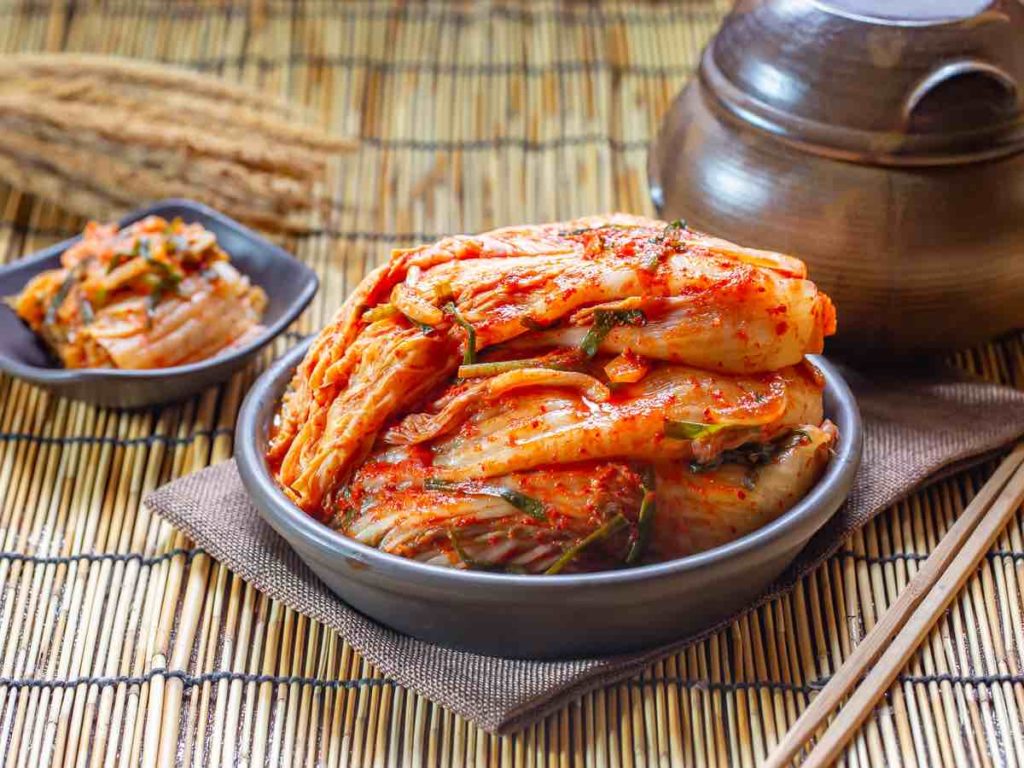
Health Benefits of Kimchi
With so many nutrients in kimchi, there have been many questions about the benefits. Thanks to science, there is now some evidence on the benefits of eating kimchi.
Is Kimchi Good For Your Liver?
The World Institute of Kimchi (Yes, it’s a real thing) found that eating kimchi can lower cholesterol and triglycerides levels in the blood. It also found that eating kimchi can lower inflammation.
These findings are generally great for liver health. In particular, these results suggest that eating kimchi keeps the liver healthy by helping fat metabolism. If you didn’t know, part of the function of the liver is to make bile.
Bile helps with fat digestion and metabolism. It also processes cholesterol. So if the fat and cholesterol in your body are uncontrolled, the liver will be overworked. Eventually, it will start malfunctioning
The World Institute of Kimchi found that eating kimchi also helped sustain healthy liver function. Aspartate aminotransferase (AST) and alanine aminotransferase (ALT) are enzymes that the liver makes in low quantities.
High levels of AST and ALT suggest liver damage. So when AST and ALT were low in subjects that ate kimchi, it suggested that kimchi helped keep the liver healthy.
The World Institute of Kimchi performed its research on mice. So the results do not directly translate to humans. But they give a good idea of how kimchi can be beneficial for our liver.
Is Kimchi Good For Weight Loss?
When it comes to losing weight, the main goal is to consume fewer calories than what your body needs. That condition is called a caloric deficit. It’s easier said than done though because food tastes so good. Plus, there are other factors too, like genetics and socio-economics factors.
For those people, they need to exert more effort to be in a caloric deficit. These people need to eat even fewer calories or burn more calories, or both.
The difficult part about eating fewer calories is not feeling satiated. You’re forced to smaller portions so you can take in fewer calories. Eating small portions of food will keep you feeling empty.
But a good way around that is to eat food with little calories. That way, you can eat lots of that food without exceeding your target calories. Luckily, there is the food like that, and almost all of it is vegetables.
For example, 100 g of napa cabbage, the main vegetable in kimchi, only has about 12 calories. And even when mixed with different vegetables, you saw above that a cup of kimchi only has about 23 calories. So you can eat a lot of kimchi and not eat a lot of calories.
The fiber in the vegetables can also help you feel more satiated. Our bodies can’t digest fiber, so it basically has zero calories for us. But the fiber still occupies spaces in our stomach, making us feel full.
What’s even better is that some of the good bacteria in our gut eat the fiber. And when they eat the fiber, they release compounds that help us feel satiated. An example of those satiety compounds is butyrate.
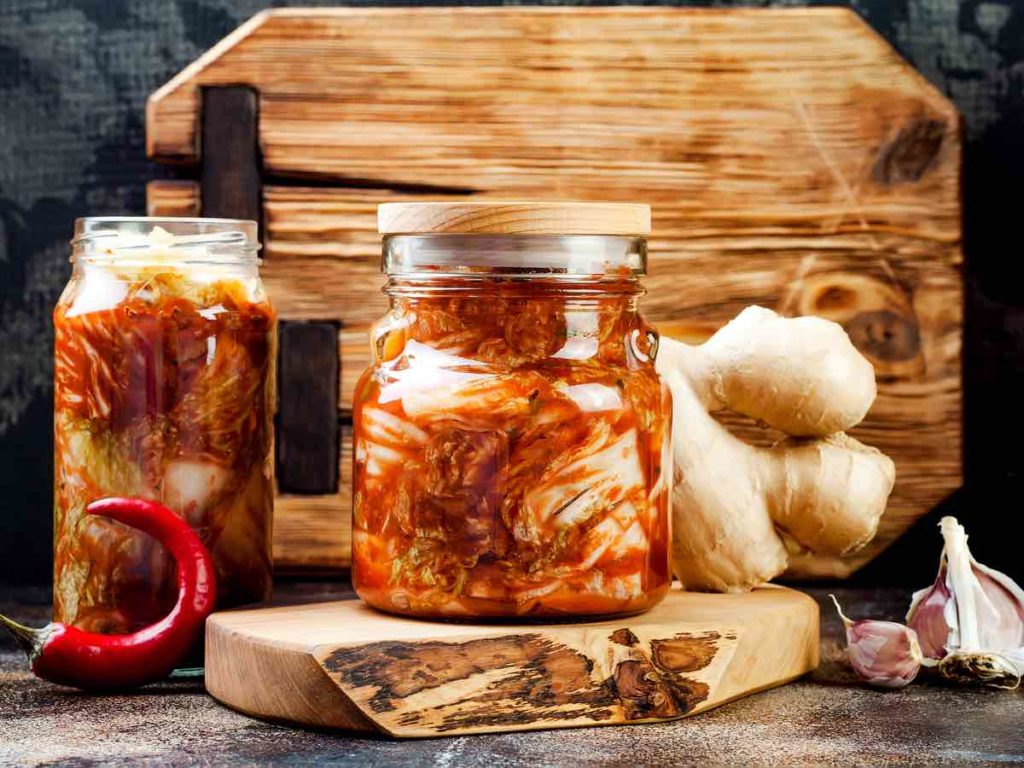
Risks Of Eating Kimchi Every Day
Though kimchi is generally healthy food, there are some risks to it.
Salt
As mentioned earlier, kimchi has salt. So people with hypertension or at risk for it should check for their salt content. Other people who may need to check the kimchi salt content are those at risk for strokes and heart disease.
A study in Korea estimated the average sodium content in 100 g of kimchi is about 830 mg. The World Health Organization recommends people consume no more than 2,000 mg of sodium per day).
But something that may be an unexpected risk from eating kimchi is gastric cancer. There are many factors that can start gastric cancer, but among them is eating too much salt.
Research has shown that salt damages the stomach lining and causes lesions. If these lesions continue and worsen, they will eventually lead to gastric cancer.
The risk for gastric cancer from kimchi is so bad that it became the most common cancer in Korea since 1999. There are now studies that link high kimchi consumption with a higher risk of gastric cancer.
Don’t worry about getting gastric cancer if you don’t overdo your kimchi consumption. Plus, if you also live an overall healthy lifestyle, your risk for gastric cancer should also be low. It would still be low even if you eat kimchi often.
FODMPAS
Garlic is another common ingredient in kimchi. People with irritable bowel syndrome (IBS) can have bad gut reactions after eating garlic. Garlic contains FODMAPs.
FODMAPs stands for Fermentable Oligosaccharides, Disaccharides, Monosaccharides, and Polyols. FODMAPs are sugars that aren’t properly absorbed by the gut. They can trigger symptoms like bloating, constipation, diarrhea, and gas in people with IBS.
May Not Be Vegan Or Vegetarian
Kimchi is mostly made of vegetables. In many cases, it’s purely made of vegetables. But, as mentioned earlier, there can be slight differences in how kimchi is made. Some use shrimp paste in preparing kimchi, which is neither vegan nor vegetarian.
Shrimp paste adds to the flavor. Plus, shrimp paste is fermented. So introducing it to kimchi can help with the fermentation process. Commercial kimchi can also have bone broth.
Spoilage or Food Poisoning
Since making kimchi involves letting bacteria grow, it needs to be done right. Otherwise, the wrong bacteria, or even worse, yeast and molds, might grow. If the wrong microorganisms grow, the best-case scenario is the kimchi tastes bad, but is still safe to eat.
The worst-case scenario is harmful microorganisms grow that might give you food poisoning. If you’ll make or get homemade kimchi, it’s easy to tell if it’s done right. It should have an alluring sour, spicy, fermented smell.
Any hints of off-odors are a sign of something wrong. Examples of off-odors with kimchi (or any Lacto-fermented vegetable) are perfume-like aromas.
With kimchi from big-chain stores, the chances of spoilage or food poisoning are lower. Those products usually go through reliable testing. But always err on the safe side. After opening the kimchi, do a smell test. If it smells okay, do a small taste test. If it tastes okay, it’s probably safe to eat.
Take note though that the effects of food poisoning can happen hours or even days after eating.
So if it’s your first time eating kimchi, don’t eat it again for the next few days. Observe yourself if you have any adverse reactions. If you’re still okay after a few days, say 3 days, then you’re good to keep eating it.
How To Eat Kimchi
In Korea, people usually eat kimchi as a side dish. Every meal is rarely complete with kimchi. A simple preparation would be some white rice, some meat, and kimchi. Kimchi goes well with pork, but you feel free to eat it with any meat.
If you’re vegetarian or vegan, you can also eat kimchi with mock meats, tofu, or legumes. Of course, in Korea, they usually eat with chopsticks but don’t worry if you don’t know how to.
If you want to diversify your taste and include East Asian food, then kimchi is a good start. If you’re looking for healthy food to add to a healthy lifestyle, then kimchi is also a good candidate. Don’t worry about how to eat it.
The bottom line is you enjoy how you eat it.
